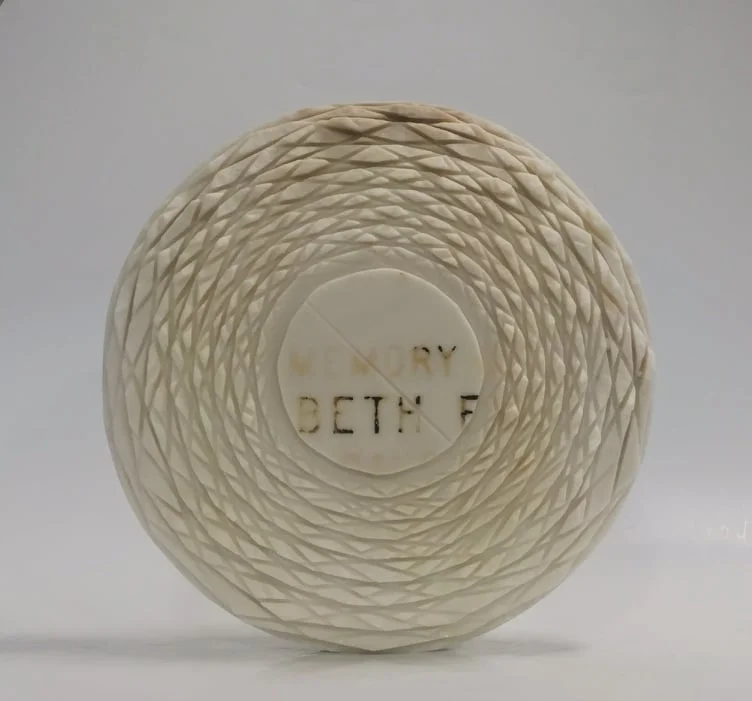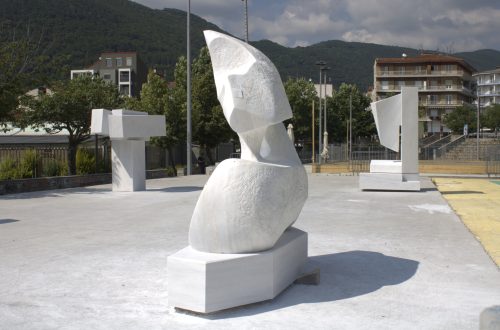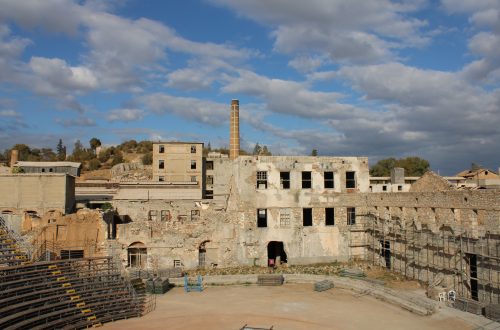
Burial Marks
THE CONDEMNED SOUL
In 2018 Greek-Canadian sculptor Vasilis Vasili began working on a series of sculptures called “Burial Marks” to underline how art can condemn the stone as material by connecting it to the human soul.
Vasili conceived the theme when he found several used and thrown-away gravestones. The bare quality of his intervention in the existing curving and engraving is based on the elegiac belief that every stone as an artistic material has a soul that art must bring to light.
According to Vasili, contemporary art has failed many times to this task condemning the material’s soul to follow the rules of anthropocentrism. As a result, there is a strong tendency to produce art based on personalized stories to satisfy the majority rather than let the internal light of the material guide the artists.
“I’m a little skeptical of the grandeur of contemporary art … in my own Yes. We load them with personal stories. With egocentric experiences. Our works are not the works of the church of many.” – Vasilis Vasili
In “Burial Marks” Vasilis presents his statement in a dramatized visualization. Each gravestone represents the various attempts of the material’s soul to break away from anthropocentrism. As during death, the human soul departs from its material shell seeking eternal light, so is a stone through sculpting.
The first time a stone understands the human soul is when it is attached to the earth. Earth as a medium conveys our darkest moments through the blood and tears that fall on the ground. When we choose a stone to mark a grave, we send it back to earth condemned to stand for the sins of the human soul for eternity. The works of the gravestone cutter and engraver can only personalize the sin by providing a brief story for the person(s) it represents but still ignoring the need of the stone to be free from what it bares.
RELEASING THE SOUL
Similarly, in art, when the artist interferes with the massive stone block to copy an anthropocentric reality to satisfy his public, he conceals the true identity of the material, its internal light, and soul.
The redemption Vasili is seeking implies reformation. Reformation as a procedure is very painful as it may require death and rebirth. Regarding human death, the soul departs from its earthy shell to enter a spiritual path. So is the soul of the stone as a material. Through his work, the artist becomes the one who performs this transition to a spiritual level. Every time Vasili’s hammer hits the chisel, the material becomes lighter to the point where the final work gradually loses its massiveness releasing the soul.
THE JOURNEY TO LIGHT
The visualization of Vasili’s concept led to those monumental sculptures narrating the various stages of the reformation of the stone’s soul. They reveal a gradual awareness of how the soul should reach the light and the tremendous effort it takes for this attempt from the soul and the artist.
Most of Vasili’s sculptures incorporate architectural elements such as windows, niches, doors, and stairs. In “Burial marks” those elements become the tools the artist provides to the stone’s soul to reach the light. In early attempts, the volume and the original identity of the slab remain almost intact (pic. 1,2). Windows and doors do not penetrate the slab reminding more of niches indicating the unwillingness of the soul to leave its comfort zone or the reluctance of the artist to provide his art for the freedom of his material’s soul.
In a group of gravestones, Vasili uses his architectural elements brilliantly to imply an attempt of the stone’s soul for a vocal expression in the form of carved niches with a concave interior as if its soul trays to echo agony (pic 2). In another stone block, the niche is circular and occupies the entire surface as a big woofer with an iron cross in the center to convey the message. (pic.4)
As the effort escalates, doors have penetrated the volume forming a large cross as if the stone has finally accepted to reduce its weight and volume in search of its spiritual light (pic. 5). In another sculptural depiction of the process, the rectangular slab takes the form of a massive circle (pic 6) with its surface carved with concentric circles. The circle in the center has kept its smoothness reminder of the material’s original use. The others have a bass relief imitating a surface ready to be peeled (pic. 9).

Gradually Vasili curves the greater volume of the slab and adds more architectural elements increasing the material’s soul potential to find spiritual light. In the final stage, the huge gravestone has been transformed into a slim, elongated monumental piece of art commemorating the victory of the soul over the material (pic. 7,8). Its previous use has been totally lost as it now incorporates next to the remaining stone other materials like wood. The elongating part occupies stairs leading to the sky as an indication that finally, the soul met the light.
Photos: courtesy of the artist/ © Vasilis Vasili
SHARE THE PAGE
#athinas
Become part of athina’s team! Share your works, enthusiasm and opinion about visual arts.
follow us


You May Also Like

Florina Sculpture Symposium
12th July 2023
Vasilis Vasili: His first sculpture symposium for 2023
2nd March 2023

 When you visit any website, it may store or retrieve information on your browser, mostly in the form of cookies. This information might be about you, your preferences or your device and is mostly used to make the site work as you expect it to. The information does not usually directly identify you, but it can give you a more personalized web experience. Because we respect your right to privacy, you can choose not to allow some types of cookies. Click on the different category headings to find out more and change our default settings. However, blocking some types of cookies may impact your experience of the site and the services we are able to offer. For more information please read our
When you visit any website, it may store or retrieve information on your browser, mostly in the form of cookies. This information might be about you, your preferences or your device and is mostly used to make the site work as you expect it to. The information does not usually directly identify you, but it can give you a more personalized web experience. Because we respect your right to privacy, you can choose not to allow some types of cookies. Click on the different category headings to find out more and change our default settings. However, blocking some types of cookies may impact your experience of the site and the services we are able to offer. For more information please read our